I’ve been to a couple of garden centres now and I’ve selected some initial plants for my bog garden. Finding plants that will tolerate getting their feet wet requires a bit of trial and error but I think it’s safe to mix some ferns with plants that are sold as being suitable for pond planting Zones 1 (moisture loving or bog plants) and 2 (marginal plants). Most plants that you find in the pond plant section of the garden centre will have a label indicating what zones they will work in.
Here are some stock photos of the plants I’ve bought:
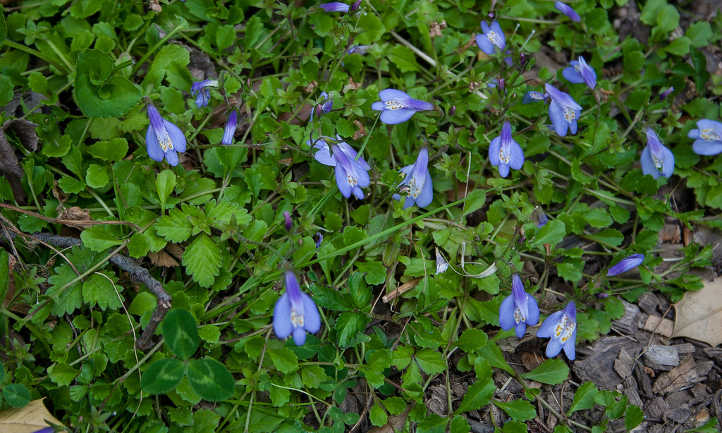
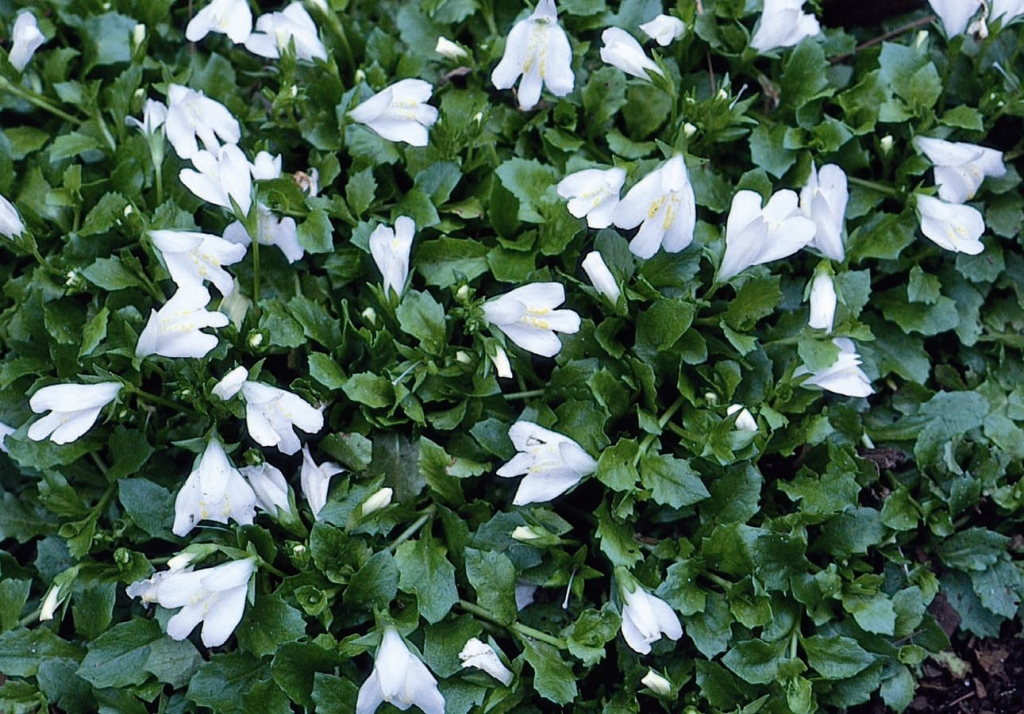
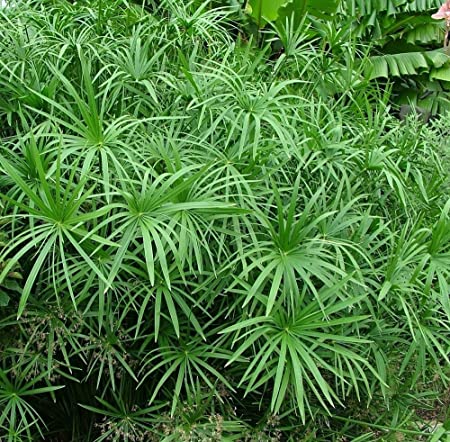
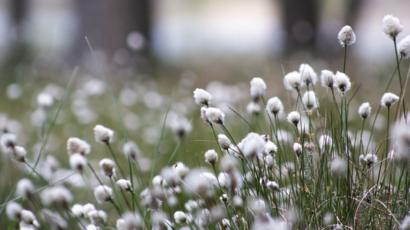
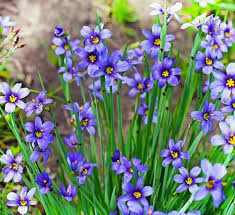
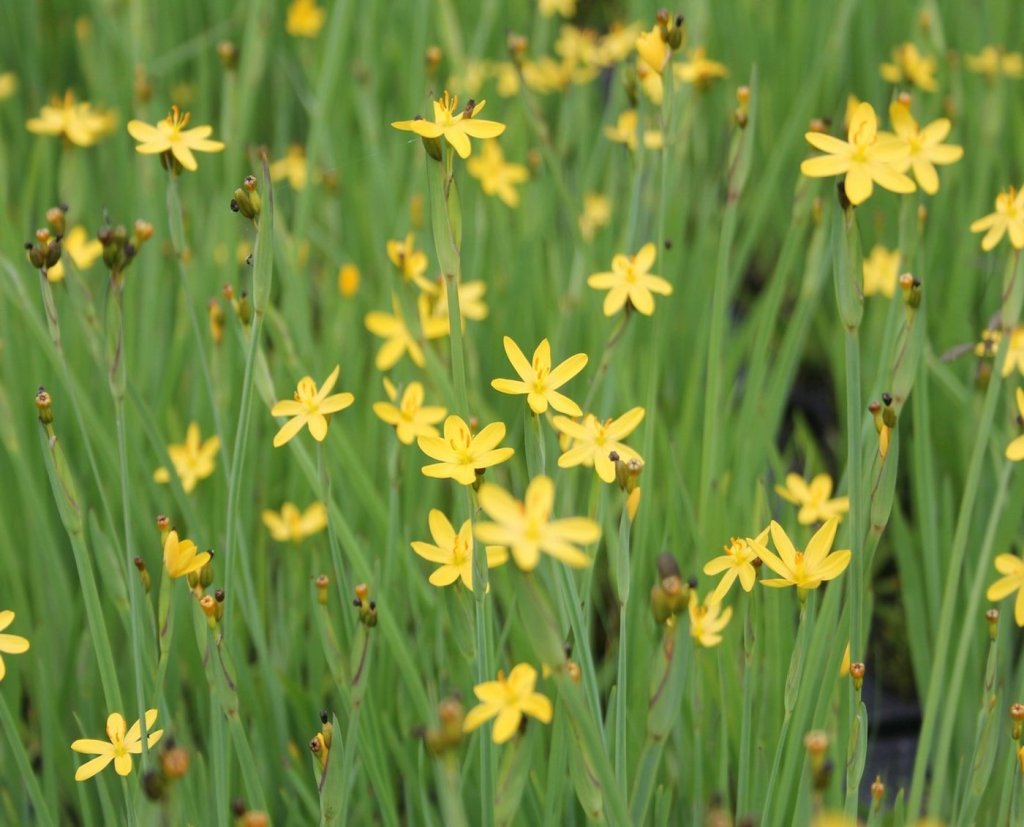
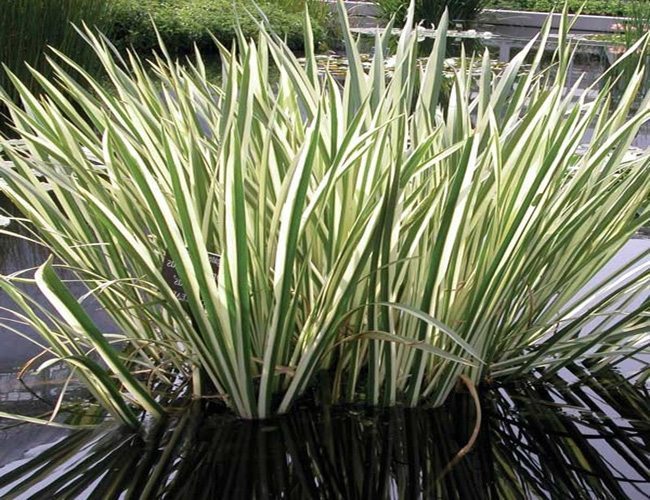
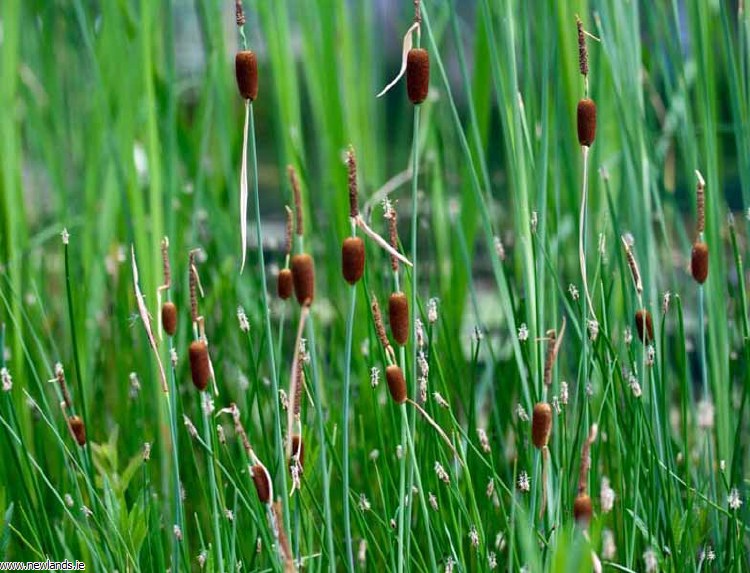
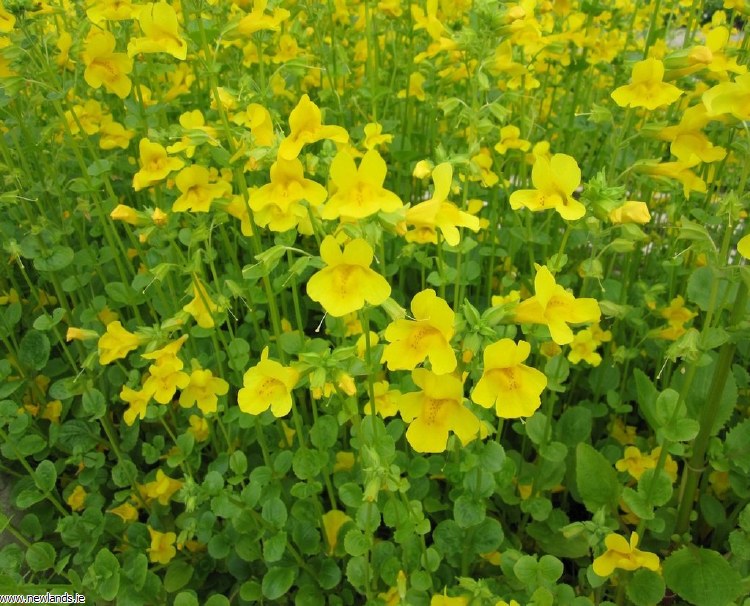
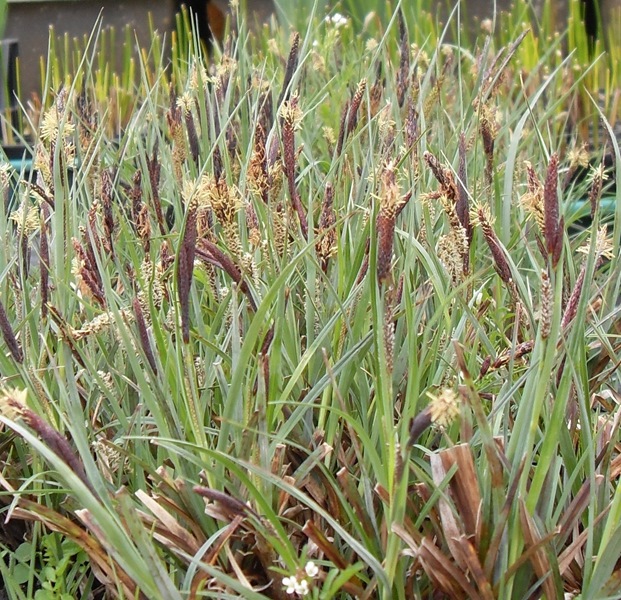
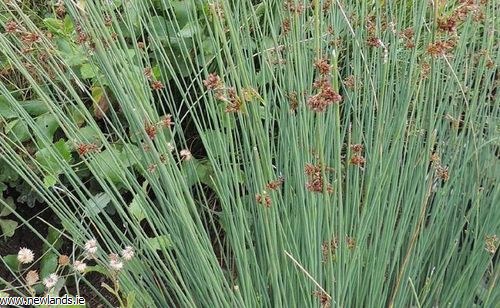
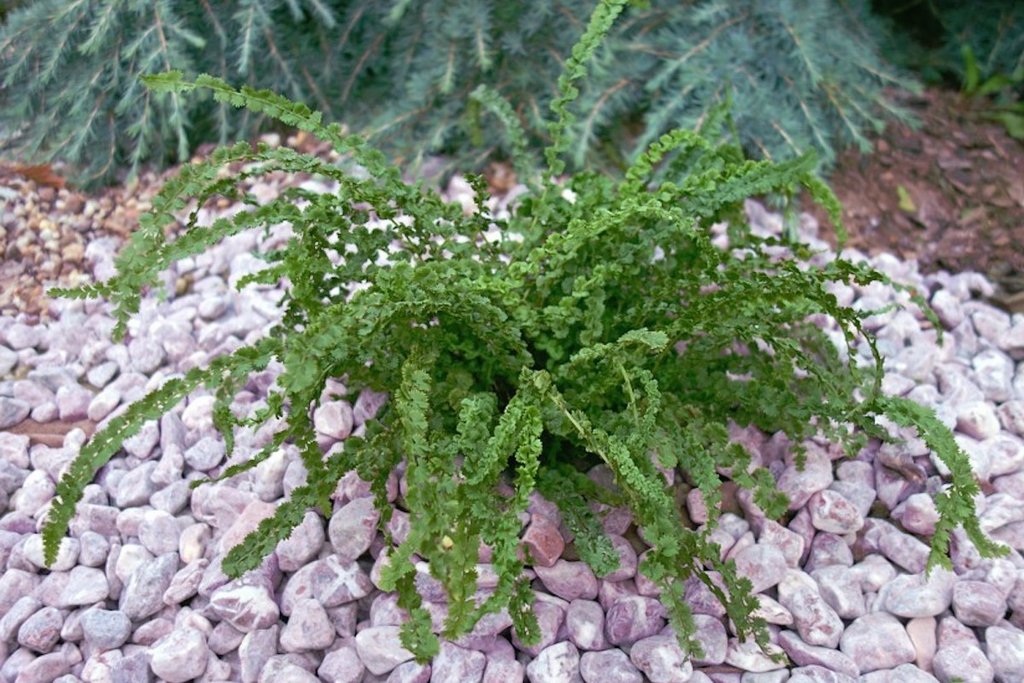
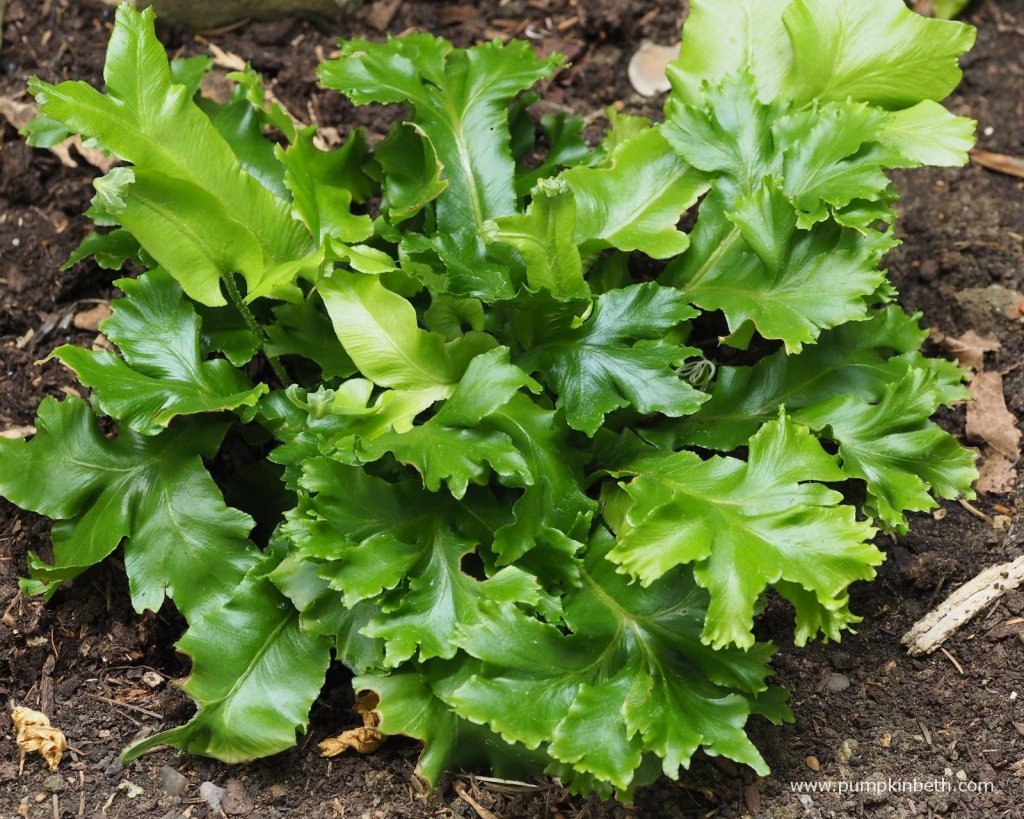
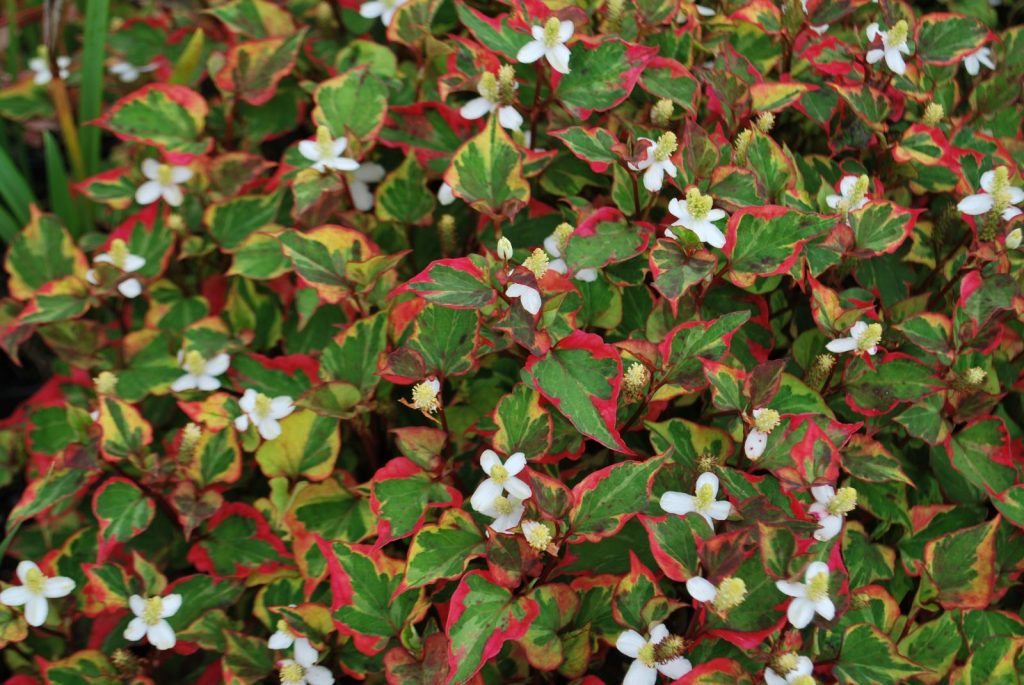
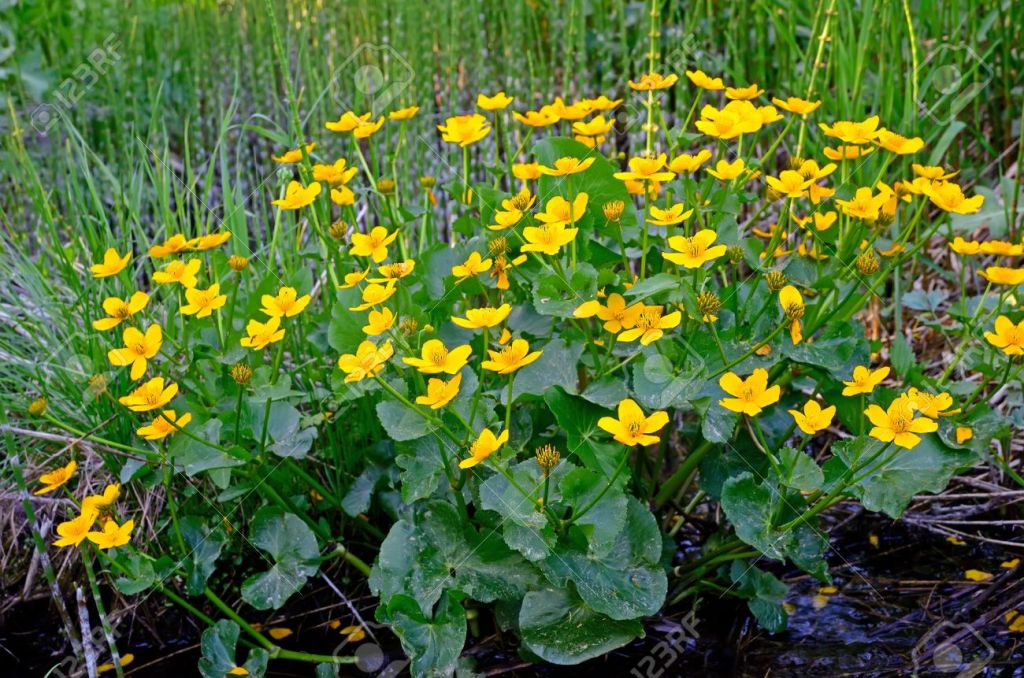
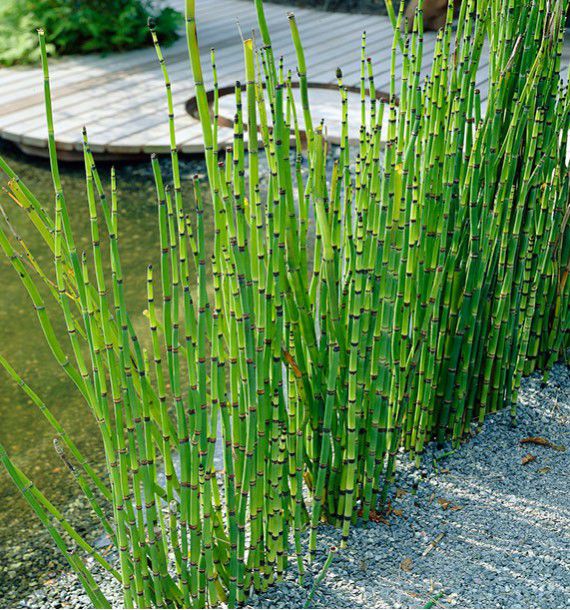
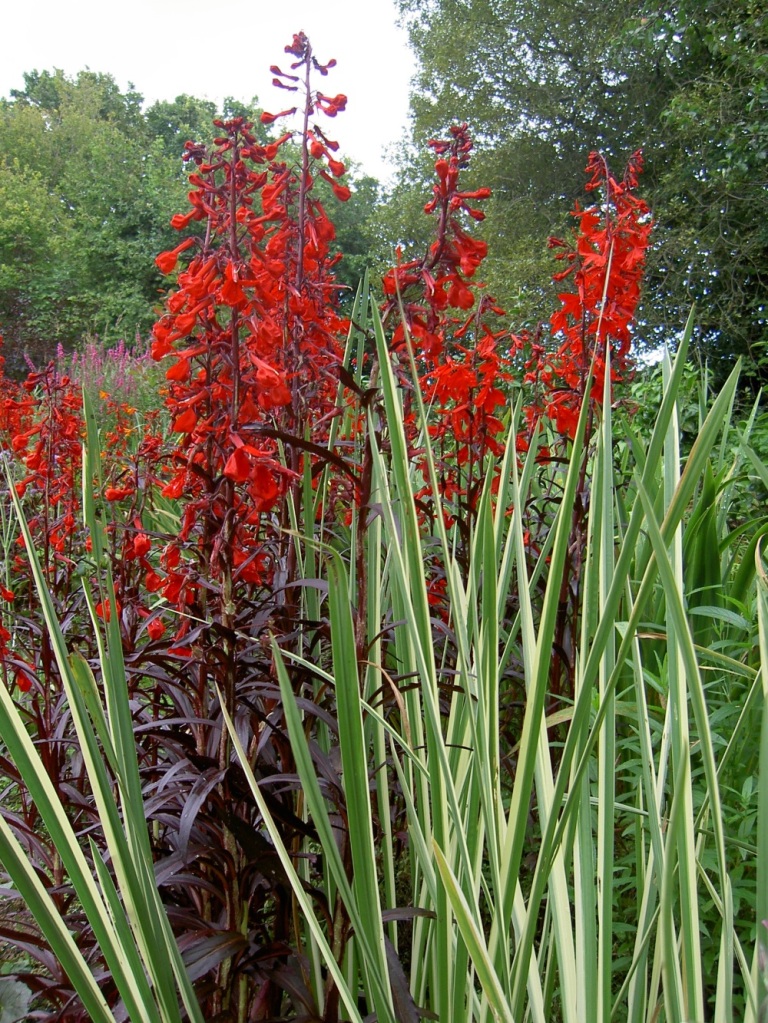
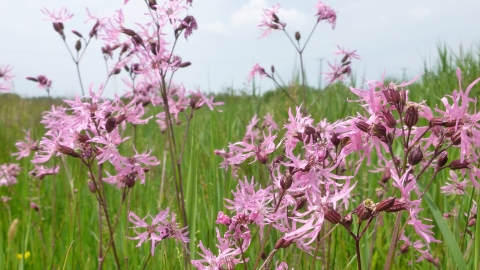
I’ve also collected some native ferns and moisture loving plants from the wild that I have yet to identify. One of these, marked “Unknown” on my original planting diagram below (since updated), I believe to be a species of the genus Petasites, such as Winter Heliotrope, Butterbur or Colt’s-foot. They all have similar leaves but different flowers so I’ll need to wait until next Spring to find out.
Update April 2021: Since writing this post, I’ve discovered that the unidentified plant is indeed Colt’s-foot, indicated by the yellow flowers that appeared around mid-March. It has since spread quite well across the bog garden and should provide good ground cover for wildlife in years to come. I’ve also tracked down some Winter Heliotrope which I’ve also planted out. This should flower in mid-Winter. These plants have different flowers but very similar foliage, making them hard to distinguish when not in flower. I’ve found that the best way to identify them is by examining the leaf edge – Colt’s-foot has a smooth edge while that of Winter Heliotrope is serrated. Also, the leaf of Colt’s-foot is usually described as “heart-shaped” while that of Winter Heliotrope is described as “kidney-shaped”.
When planting, I’ve arranged the plants according to height with the taller plants, such as the Snake Grass, towards the back.
Other plants you might want to consider include Yellow Flag Iris (although I’ve found it won’t flower unless it gets a lot of sun) and bog bean (works weel in my pond but I understand it also works in a bog garden).
One plant I would avoid is water mint. It is attractive and attracts pollinators but it is a bit of a thug and needs constant management to keep it from taking over. I have it in my pond and I’ve found it very hard to control. It has even spread through my lawn.
Here’s a rough schematic of the planting layout for the bog garden:
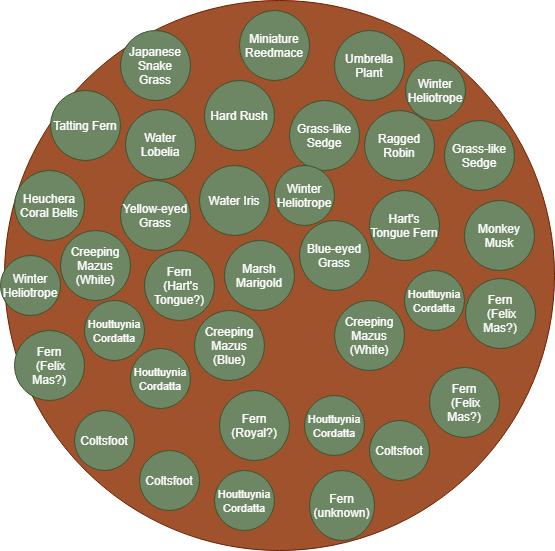
Here’s what the garden looks like after initial planting…
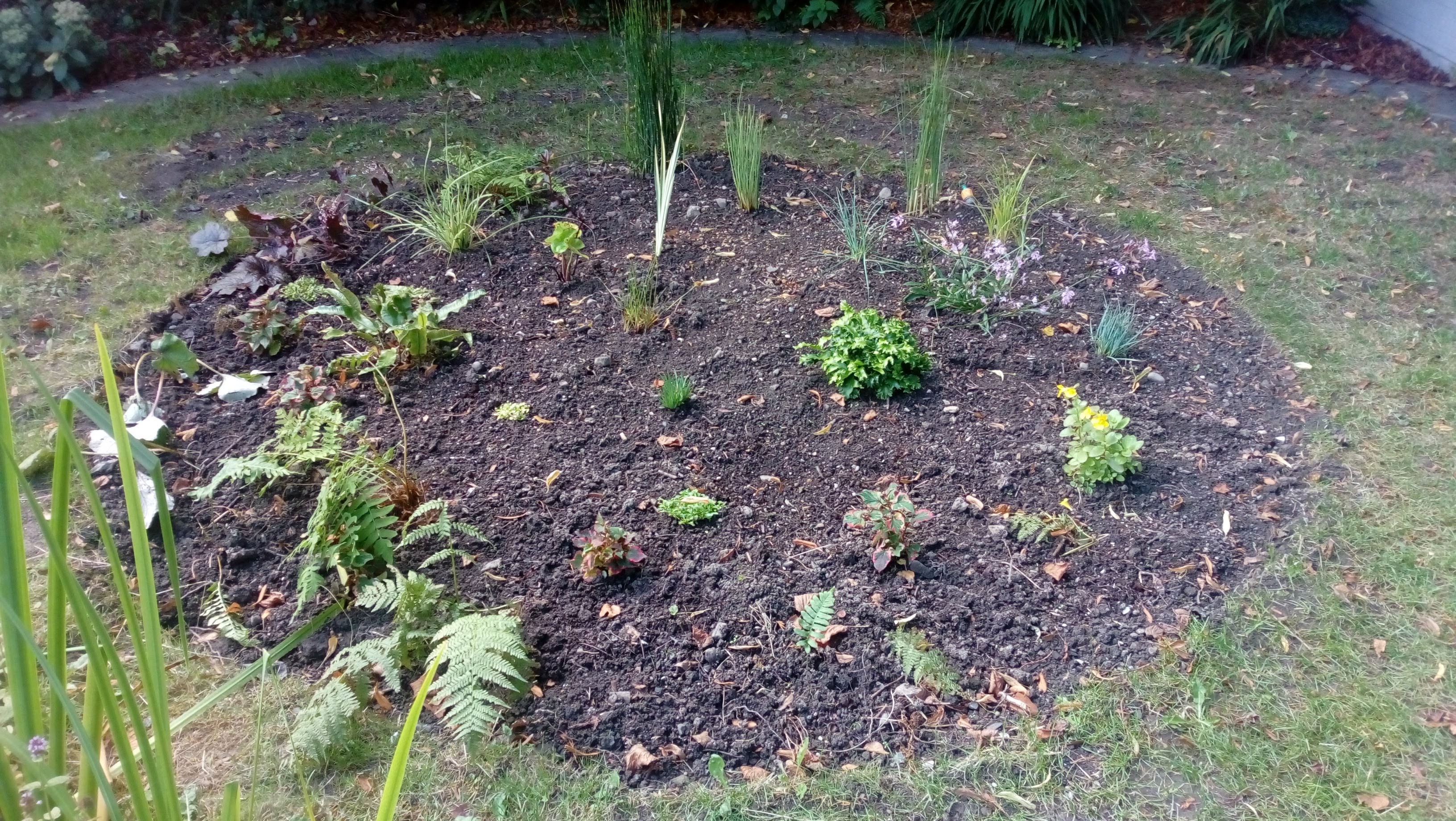
As the plants establish themselves I’ll post more pictures so you can see what works and what doesn’t.